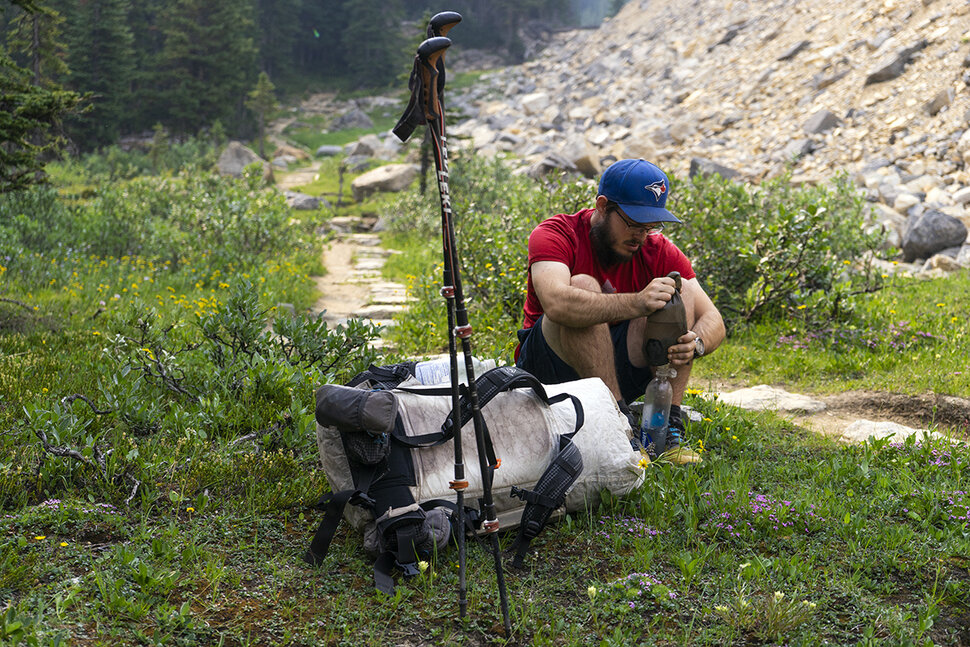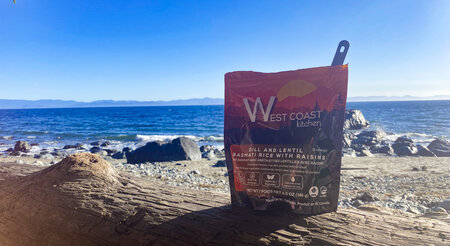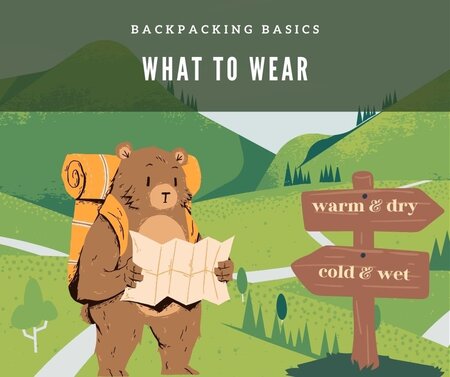Backpacking Basics: Camp Kitchen & Water Treatment

Camp Kitchen
After a long day in the backcountry, it's important to fuel well. But how do you prepare a meal in the wilderness? There's a few different options when it comes to stoves.
In the backcountry stove world, most will fall into one of two categories:
- Canister stoves
- Liquid gas stoves
Canister stoves are quite common and have less of a learning curve than liquid gas stoves. Canister stoves screw onto isopro canisters. These canisters contain a mix of propane and isobutane. Isopro canister threading is unique, so these types of stoves can only be used on isopro canisters.
Some examples of canister stoves include Jetboil’s MiniMo, Flash and MightyMo stoves, as well as MSR’s PocketRocket and the GSI Outdoors Glacier Camp Stove.
Canister stove pros:
- Easy to use
- Boils water quickly
Canister stove cons:
- Prone to wind interference
- Not great at “cooking”
Liquid stoves are a popular alternative to canister stoves. These tend to work more consistently in a wide range of conditions, like the cold and at high altitudes. Liquid stoves use a variety of liquid gases, depending on the model. The MSR WhisperLite International stove, for example, can use white gas or kerosene, while the Dragonfly can also use diesel. MSR makes its own white gas, called Super Fuel.
Liquid stoves contain more parts than canister stoves, so they can be a little more finicky to use.
Liquid gas stove pros:
- More consistent at altitude and in cooler temperatures
- Can use a variety of fuels
Liquid gas stove cons:
- Lots of parts
- Steep learning curve
If you plan to prepare and eat pre-made backpacking meals, a long-handled spork will be a welcome kitchen utensil.
Water Treatment
While some people can carry all the water they'll need for a trip straight from the trailhead, most will need to collect water at some point during their time in the backcountry.
When it comes to treating water, there are two categories:
- Water filters
- Water purifiers
Water filters remove particulates like protozoa and bacteria from water, while water purifiers purify. Boiling water, for example, is a way to purify it.
Let’s back up though. Why is it important to filter water in the backcountry? While water may look safe to drink to the naked eye, it actually contains millions of tiny particles, some of which can make you sick.
When treating water, we aim to remove:
- Organic matter
- Protozoa (Giardia)
- Bacteria (like E.coli and Salmonella)
- Viruses (like Hepatitis A and Norovirus)
Organic matter, protozoa and bacteria are all large enough at the microscopic level that water filters should capture them, however viruses are smaller, so purifying is required to eliminate them.
The good news is that you’re relatively unlikely to run across viruses in water sources in the Canadian backcountry, so in most cases, a water filter is sufficient. However, it’s not a bad idea to have a form of water filtering as well as purifying in your kit. Let’s break down a few options.
Water filters come in all shapes and sizes. But most will fall under one of these categories:
- Gravity filter
- Pump filter
- Squeeze filter
Gravity filters, such as Katadyn’s Gravity BeFree or Platypus’ GravityWorks, are really good at filtering large amounts of water at basecamp. However, you need to wait for gravity to work and depending on where you go hiking, it can be tough to find someplace to hang a gravity filter.
Pump filters, like Katadyn’s Pocket Microfilter, MSR’s MiniWorks EX water filter and MSR’s TrailShot Microfilter, are more portable personal systems. Pump filters can be easier to use at water sources that might not have much flow.
Squeeze filters, like Katadyn’s BeFree, are fast personal systems. You scoop up the water into a bag, then filter it into another container, or drink through the filter.
All of these filters can be cleaned in the field when flow rate drops, though some are easier than others. Those with ceramic elements, especially, are among the easiest to clean. Just wipe away the gunk and continue filtering.
Water purifiers are best used in combination with water filters.
UV purifiers like the SteriPen Adventurer are easy to use but this one works best with wide mouth containers.
Chemical treatments, like the Pristine Water Treatment Tabs are good backups to have in your backpacking kit. Keep a few tablets in your first aid kit. Brands will have slight differences, so it’s best to read the instructions before use.
A few products will filter and purify. These include the MSR Guardian and the Pristine Water Bottle & Purifier.
Remember, boiling water will also purify it. And if you come across any grungy water sources you just can’t pass on, using a pre-filter, like a Buff or bandana, can help prolong the life of your filter.
It's worth mentioning that choosing where to collect water is also important. Flowing sources are best. Even better if you can collect water upstream from where people are doing their dishes, or brushing their teeth.



